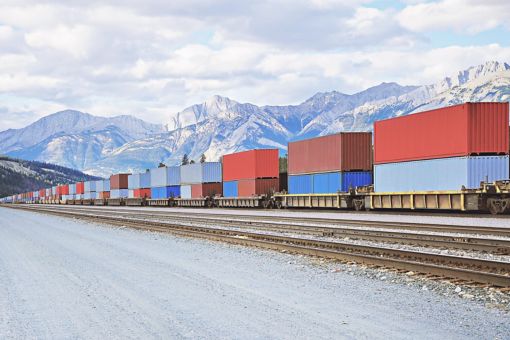Building resilience in the face of trade disruption
The recent trade landscape has been significantly impacted by tariffs between the U.S. and Canada, impacting over 81% of businesses. Tariffs, which are taxes imposed on imported goods, serve various purposes, including protecting local industries and influencing trade balances. They can encourage consumers to buy domestic products by making imports more expensive, but they may also lead to higher prices for consumers and provoke retaliatory measures from other countries, resulting in trade disputes.
Latest developments:
- February 10, 2025: U.S. imposed 25% tariffs on imported steel and aluminum from all countries, including Canada. According to the Executive Order, these tariffs will come into effect March 12, 2025 and also apply to downstream products (goods made from steel and aluminum), with no exceptions.
Canada is the top supplier of both steel and aluminum to the U.S., therefore these tariffs will be a significant source of disruption for producers in Ontario and Quebec, and the automotive, construction, manufacturing, defense and aerospace industries.
- February 3, 2025: A temporary pause on U.S. tariffs imposing a 25% levy on Canadian goods, excluding energy products that would be subject to a 10% tariff.
In response, Canada announced a proposed 25% tariff on $155 billion worth of American goods. The provincial governments also implemented other non-tariff countermeasures in response to the announcements.
KPMG is committed to supporting the Canadian business community during this period of uncertainty. By proactively strengthening resilience and adapting to the changing environment, Canadian businesses can foster growth and stability in the face of disruption.
81% of business leaders say they will be impacted by U.S. tariffs
Fostering a stronger, more resilient country
Canadian businesses have made significant strides to improve their operational efficiency and retool their supply chains in the last five years to navigate the pandemic, high interest rates and inflation. Moving forward, it will be crucial for Canadian businesses to have a well-structured strategy that adapts to evolving geopolitical risks.
We interviewed 250 Canadian business leaders to understand their reactions and responses to the tariff threats posed by U.S. President Donald Trump. Our research finds that most leaders want the federal and provincial governments to take immediate steps to eliminate inter-provincial trade barriers, reform the tax system, provide incentives to onshore and encourage Canadians to “Buy Canadian.”
86% say potential tariffs are a “wake-up call” to improve productivity in Canada and in their business
90% want government to encourage Canadians to “Buy Canadian”
85% say the federal and provincial governments must reduce business taxes and reform the tax system to stay competitive with future U.S. tax reform
- 80 per cent agree the federal government should reintroduce income supports similar to those offered during COVID to help Canadians whose jobs are disrupted or lost due to tariffs
- Yet 79 per cent are concerned about the related inflationary impacts of increased fiscal spending if a “bailout fund” is created
- 62 per cent will try to offset costs in other ways rather than pass them on to consumers
- 48 per cent plan to shift investments or production to the U.S. to serve the U.S. market and reduce costs
Implementing a proactive trade strategy
In the current environment, it is highly important to proactively assess current business strategies, structures and supply chains to mitigate risk and build resiliency.
Utilize trade data to gain a comprehensive understanding of the current landscape, including potential impacts and opportunities. This information can help pinpoint specific products or materials that are most susceptible to tariff increases and assess their effects on revenues, operations, and partnerships. By grasping the potential impact of tariffs on costs, companies can adopt cost-saving measures to sustain profitability.
Prioritize targeted operating outcomes to develop a response strategy model and scenario evaluation:
Diversify supply chains: By improving supply chain visibility, companies can better understand their operations and consider alternative suppliers located in countries with fewer tariffs, which can help reduce the risks of disruption. Additionally, enhancing resiliency through scenario planning and data-driven decision-making will enable proactive planning for future challenges.
Tariff exclusion process: Some tariffs allow for exclusions that fit the eligibility criteria. Companies can request exclusions for specific products, requiring detailed justifications and documentation.
Strategic transfer pricing: Transfer pricing plays a significant role in customs valuation, as it can directly impact the amount of tariffs paid. By establishing a lower transfer price, businesses may be able to reduce their tariff liabilities.
Evaluate contracts and partnerships: Conducting a thorough review of contracts related to customs duties and tariffs to understand obligations between parties can provide opportunities for cost reduction and improved compliance.
Country-of-origin rules: Assess the application of these rules in your operations.
The Canadian government introduced the tariff remission process as support for businesses impacted by tariffs. Collect the necessary information and submit an application for tariff recovery on goods imported from the U.S. for qualifying entities under the Canadian tariff remission process. These entities can recover tariffs if the goods cannot be sourced from Canada.
Access to insightful trade intelligence will be critical for businesses to stay informed and allow them to proactively adjust their strategies and operations. This monitoring will help minimize unexpected costs and disruptions, ensure compliance, and maintain competitive advantage in the global market. KPMG professionals can support with ongoing monitoring and guide you on how changes could impact your company.
How KPMG can help
KPMG Tax, Legal and Advisory leaders can help provide comprehensive support on tariffs and key considerations for navigating the path ahead.
Optimize supply chains, mitigate impact and recover applicable tariffs
Assess structures and policies to reduce tariff liabilities
Enhance resiliency to enable business continuity
Evaluate and manage enterprise risks and compliance obligations
Evaluate contracts and partnerships to understand obligations
Optimize capital and strategic restructuring to endure challenges
Manage productivity, risk, and change in the short through long term
Have a question for our team of professionals?
As Canada pulls together to address these uncertain times, KPMG teams can help equip you with the insights you need to make informed decisions on what’s best for your business. Contact us today.
Events
Watch
Navigating cross-functional tariff complexities
Feb 12, 2025 | KPMG International
Watch
Navigating the new administration’s key trade policies
Feb 6, 2025 | KPMG U.S. webcast
Watch
U.S. Tariffs: Urgent implications for businesses in British Columbia
Feb 5, 2025 | KPMG in Canada
Watch
Inbound distribution in the US in 2025: The year of tariffs and Amount B
Feb 4, 2025 | KPMG U.S. webcast
Watch
The tariff impact: Navigating cross-functional tariff complexities
Jan 28, 2025 | KPMG in Canada
Insights and resources
How we can help
Connect with us
About the KPMG in Canada Tariffs Survey
KPMG in Canada surveyed 250 business leaders across Canada between January 21 to January 27, 2025, on Sago’s premier business panel, using Methodify’s online research platform. Eighty-eight per cent export or sell to the U.S. Eighty-one per cent say they will be impacted by U.S. tariffs, 11 per cent will not be impacted, and eight per cent are unsure if the tariffs would affect them. Twenty-seven per cent of the respondents helm companies with annual revenue of between $100 million and $499 million, 23 per cent between $10 million and $49 million, 23 per cent between $500 million and $1 billion, 18 per cent between $50 million and $99 million, and 10 per cent over $1 billion.



















